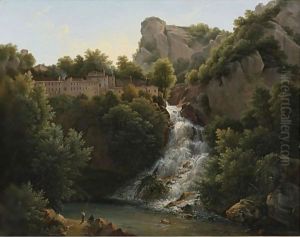Augustin Marius Paul Bec (Polydore De Bec) Paintings
Augustin Marius Paul Bec, commonly known as Polydore De Bec, was a French artist born in the year 1869. Not widely recognized in the mainstream art historical canon, information on Bec may not be as extensive or readily available as for other more prominent artists of his time. However, he is known to have been active during a period rich with artistic development in France, which spanned the era of Impressionism, Post-Impressionism, and the early stages of Modernism.
Bec's artistic journey would have unfolded against the backdrop of a rapidly changing world. The late 19th and early 20th centuries were a time of significant social, technological, and political transformation. This era saw the Eiffel Tower's construction, the World's Fairs, and the advent of the Industrial Revolution, which dramatically altered the European landscape and society. It was also a period of intense artistic innovation, with artists like Claude Monet, Vincent van Gogh, and Paul Cézanne breaking from traditional techniques and perspectives to explore new ways of seeing and representing the world.
Little is known about Bec's training or early work, as he does not figure prominently in art historical texts. Nonetheless, as an active artist in France during this era, he would have been exposed to the avant-garde movements of the time and may have exhibited his works in salons or galleries, which were crucial venues for artists seeking recognition and patronage.
Augustin Marius Paul Bec's death in 1947 marked the end of a life that spanned a tumultuous period in European history, encompassing two World Wars and the interwar period, which undoubtedly influenced the cultural and artistic landscape of his time. Despite the scant details of his personal life and oeuvre, his existence as an artist contributes to the rich tapestry of the history of French art. His works, should they be studied or rediscovered, would offer additional insights into the lesser-known narratives of the era's art scene.
